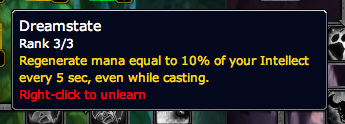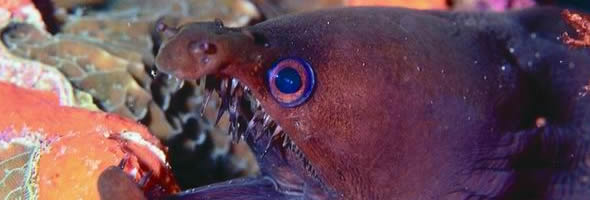Once you decide what kind of organization your guild is going to be, sketch out rules and policies, and design a leadership structure, you are ready to build up your membership. Ideally, if you have an ambition to start a brand-new guild, you already have a stalwart band of friends and associates to sign your charter. I would go so far as to say that it’s essential to start any new organization with at least a couple of members–it will be extremely hard for just one person to follow the recommendations I’m going to make in this.
1. Get the Word Out
I hate to break it to you, but a guild of one–or even ten–isn’t going to be able to accomplish much. Ideally, you need to bring in a lot of people quickly. How can you do this with a new organization? If I were starting from scratch, I would do the following four things. This set of tips assumes that you want to muster your troops right now, ahead of the expansion.
a. Go through your entire friends list and send everyone a note about your new guild.
b. Advertise on your realm forum and bump it once per day.
c. Start pugging instances obsessively and talking about your guild to everyone you meet.
d. Sponsor and lead open events, like a pug Karazhan, or for the ambitious or more experienced, ZA bear runs, Magtheridon or even Hyjal. The events you lead depend on your level of experience in the current content and the number of members you have at startup.
At this early stage, you may choose not to have an application process and may invite all who are interested. This is not a bad idea when you’re getting off the ground, but it could make raiding difficult later. It’s hard to get people to apply to an organization that doesn’t have a track record, but some people will take a chance if they’re offered a spot in a more informal manner. I advise you to find a middle way and only invite players you or another officer have had a conversation with. You want them to know ahead of time what kind of organization they are joining.
It bears mentioning, also, that prospective members will judge your guild by your behavior and the behavior of your officers. Now is the time to watch everything you say and do on your server–make sure that you reflect your guild’s values in how you treat other players. Now is NOT the time to spam trade channel.
2. Get Friendly With Other Guilds
Alliances between guilds can be formed on the basis of just a few friendly words passed back and forth. My current, very successful guild began when one of our tanks saved one of our healers from certain death in Blade’s Edge Mountains. They got to talking and found that they were both officers in Karazhan guilds with the ambition of moving on to 25-mans. At that moment, the seeds of an alliance were sown.
Alliances and cross-guild friendships have many different uses. You may want to partner up with another small guild at some point and run instances together, even if you keep your two guilds separate. Friends in other–ideally more progressed–guilds can be a source of help and information. For example, many members of Collateral Damage have friends in Cohors Praetoria, a more progressed guild on our server. The lovely people of CP have sold us Hearts of Darkness for cheap and have advised us on many boss fights as we’ve gone through T6 a few months later than they did. Some of their players have even offered to fill spaces in our runs if we need them. In return, CP has used our raid ID at least once to get an Illidan kill without farming the whole instance. These kinds of cross-guild arrangements are golden–they are mutually beneficial, and they tend to leave everyone with a good feeling about the virtual community. In addition, at times we’ve shared information about recruits, particularly about certain bad apples. Ideally, if one raiding guild on your server recruits and later /gkicks a whiny, greedy player, their recruiting officer will inform other guilds about it. Sometimes it’s difficult to tell what a player will be like from an application alone.
I urge you, as a prospective GM, to open a line of dialogue to the recruiting officers of other guilds on your sever. It’s a recruiting officer’s job to talk to people–if this person is halfway competent, he or she will be happy to have a conversation with you. Something I’ve done in the past, whether or not I knew much about the guilds in question, was to refer good applicants that were not right for my guild, either because they were not prepared for T6 or because we didn’t have space, to other guilds on the server that happened to be recruiting. I judged these guilds based on their ads and on the players that I knew, and have referred people to the ones that seem like class acts. Especially with the changes leading up to the expansion, there are enough players to go around for everyone. If you get to know some recruiting officers, they will probably be glad to help a new guild out. Established guilds can’t take anyone and everyone who comes their way. I know CD can’t even take all of the good applications. I always try to help anyone who applies to find a new guild home, when I can. If I knew of an enthusiastic new guild that was trying to build itself up, I would certainly point people that way. In turn, I know that many of Collateral Damage’s players have filled spots in other guilds’ T4 and T5 runs when particular classes are needed. If you reach out to others–particularly players that you know are classy, friendly individuals–people will most likely support you.
3. Recruit Creatively
Once you get a few members on the roster, you can fine-tune your recruiting a bit. In order to find players to fill specific roles, follow the 10-step guide I wrote on this type of recruiting. The guide assumes that you already have an existing player base, so you may have to adjust some of the advice to suit the needs of your brand-new guild.
What Do I Do if I Want to Start Once the Expansion Comes Out?
It may have occurred to you that most of the advice in this article applies to those who want to get their guild off the ground ahead of the expansion. It is true that the time is running short, and that you may prefer to start building a membership base during the leveling phase of Wrath. That approach has a set of advantages.
1. Many players may return to the game at that time, and some of those will be free agents.
2. It’s easier to leave a guild during a leveling phase than during a raiding phase, so some raiders will suddenly be free once Wrath hits.
3. Expansions in general are a time of change–some old guilds will implode when it hits, leaving their raiders homeless.
4. Some guilds will downsize to 10-man content, and some of their players will leave.
It sounds great, right? The only drawback to starting your recruiting drive when Wrath hits is that with everyone leveling at the same time, you may not be able to distinguish the kind of player that you want from the herd. If you pick up lots of players as they level, it will be hard to tell who will be able to make a commitment to raiding. This is in some sense an unavoidable problem for a new guild. My advice is to plan for continuous recruiting. Bring in more people than you think you will need, and sort out the difference between raiders and non-raiders once you actually start tackling 10 or 25 man content in the expansion. And yes, if you do general recruiting early in the expansion you may have to draw some distinctions in your guild roster between raiders and non-raiders, but that, dear readers, is a topic for a different entry in the series.
Happy recruiting!








